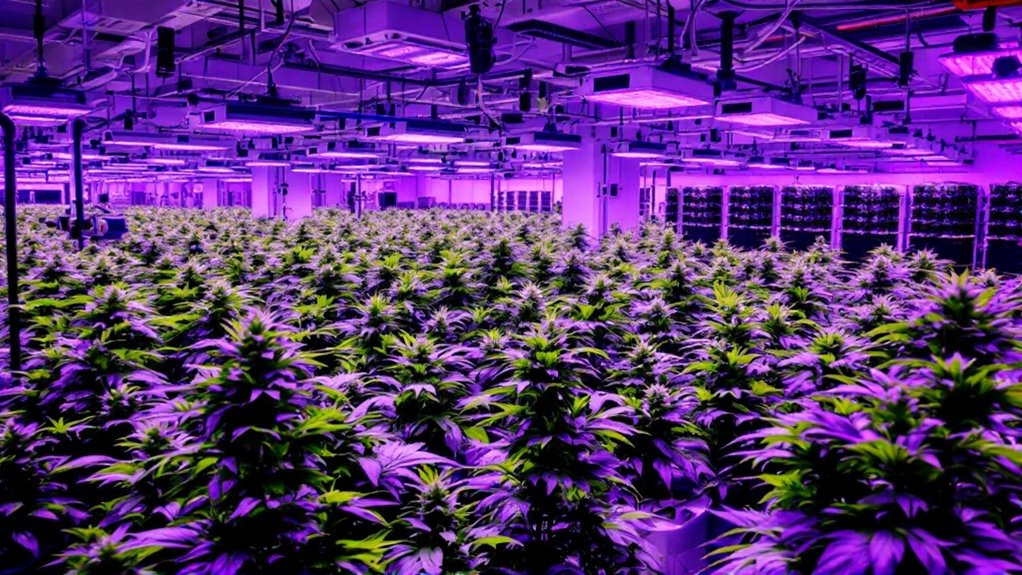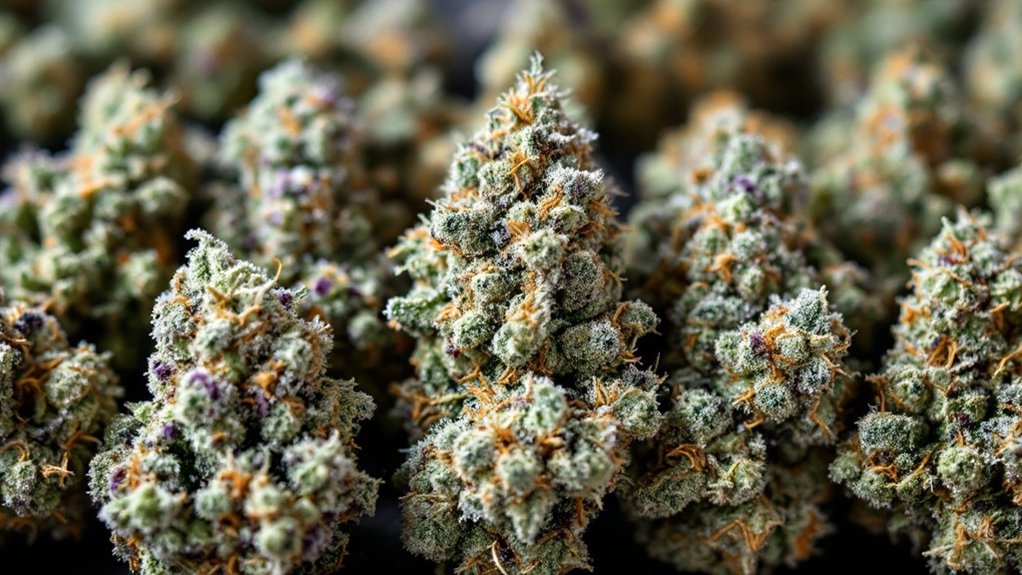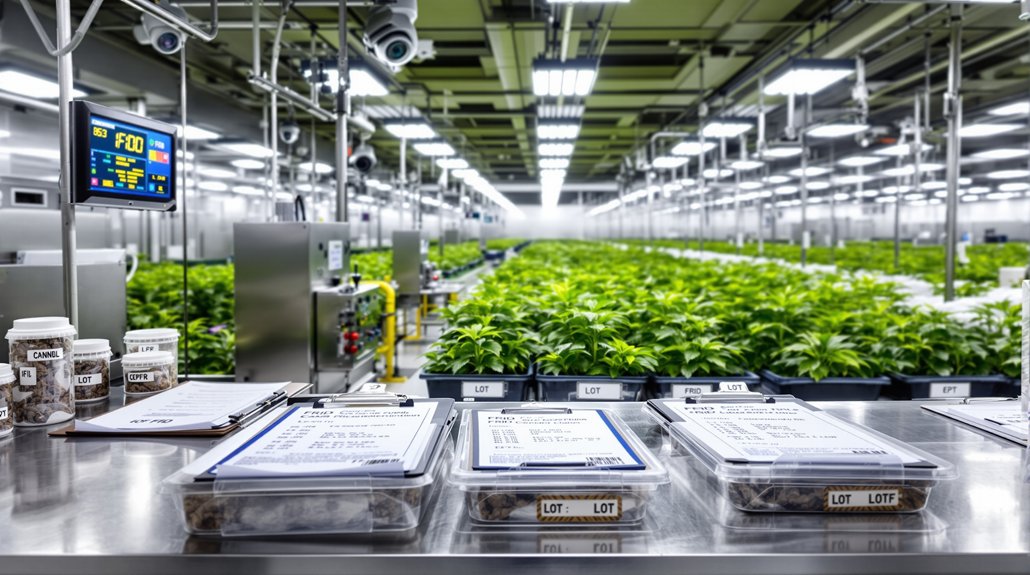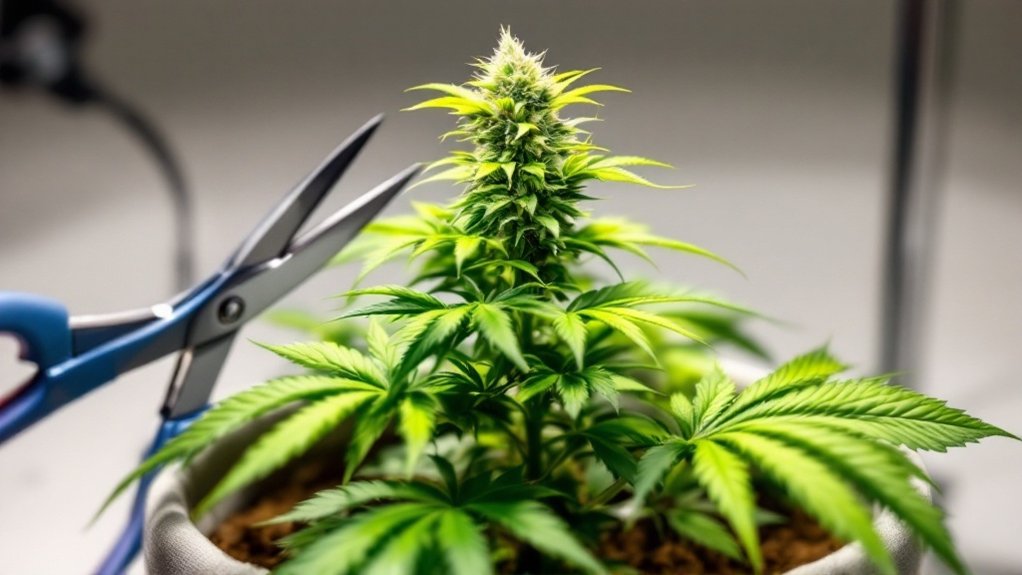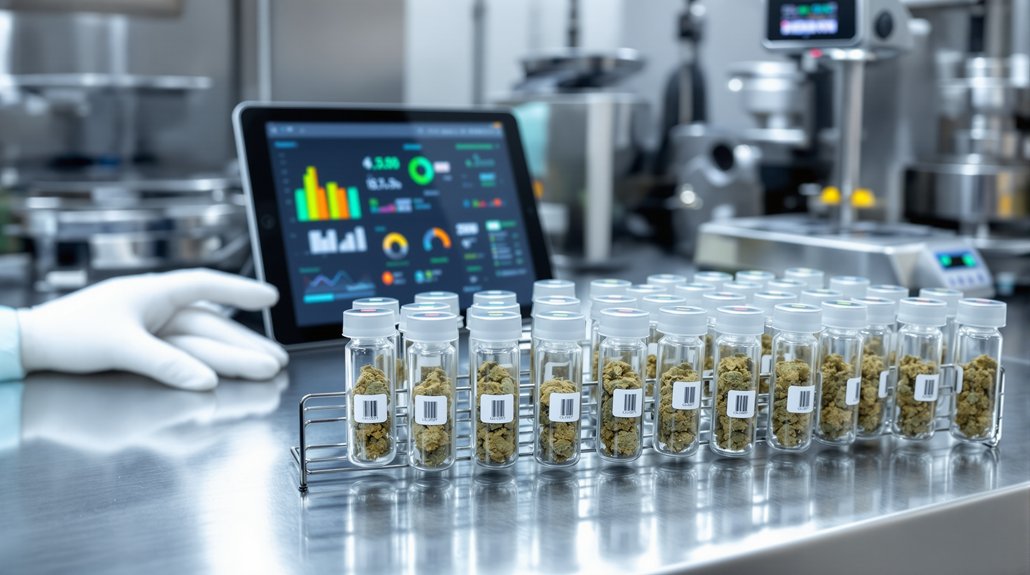Cannabis cultivation technology has evolved dramatically with AI data analytics, automation, and IoT integration. Modern operations utilize customizable LED lighting systems that match specific growth stages while reducing energy consumption by up to 90%. Controlled environment agriculture maintains precise temperature and humidity ranges, while robotics streamline harvesting and processing. Blockchain technology guarantees regulatory compliance through transparent supply chains. These innovations collectively enhance yield, potency, and consistency while minimizing resource use. Exploring these technologies reveals how science is revolutionizing cannabis production.
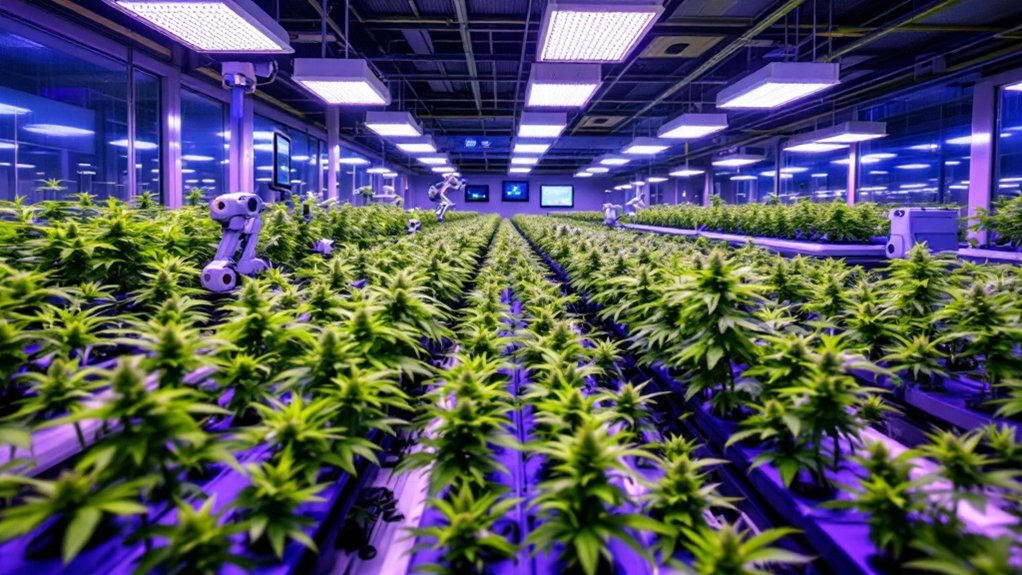
As the cannabis industry continues to evolve rapidly, cultivation technology has transformed from basic agricultural practices into sophisticated systems leveraging cutting-edge innovations. Modern cannabis cultivation integrates artificial intelligence for real-time monitoring of critical growth parameters including temperature, humidity, and light intensity. These AI systems analyze thousands of data points simultaneously, enabling growers to make precise environmental adjustments that enhance plant health and potency. Predictive analytics algorithms now forecast harvest yields and breeding outcomes with increasing accuracy, allowing cultivators to plan resources more efficiently.
Automation and robotics have revolutionized large-scale cannabis operations through streamlined climate control and nutrient delivery systems. Robotic trimmers and harvesters process plants with remarkable consistency at speeds exceeding human capability, reducing labor costs while standardizing product quality. Even hobbyist growers benefit from compact all-in-one systems that automate lighting cycles, ventilation, and feeding schedules. These integrated systems frequently incorporate Internet of Things (IoT) devices that permit remote monitoring and management via smartphone applications at any time. The integration of smart sensors provides continuous real-time feedback on environmental conditions, creating opportunities for better decision-making and automated responses to changing grow conditions. The global cannabis market’s projected growth to $444 billion by 2030 is driving significant investment in these advanced cultivation technologies. Furthermore, fully automated hydroponic systems ensure optimal nutrient delivery for improved plant growth and quality.
LED lighting technology represents another notable advancement in cannabis cultivation, offering customizable light spectrums that enhance photosynthesis while consuming less electricity than traditional high-pressure sodium fixtures. Smart lighting systems adjust intensity and wavelength composition based on growth stage, with some incorporating UV and far-red light to influence cannabinoid profiles and plant morphology. These programmable systems synchronize precisely with plant photoperiods, maintaining ideal 18/6 or 12/12 hour light cycles during vegetative and flowering phases respectively.
Controlled Environment Agriculture (CEA) provides cannabis cultivators unprecedented precision in maintaining perfect growing conditions. Advanced greenhouse systems maintain temperature between 70-85°F (21-29°C) during day cycles and 62-72°F (17-22°C)at night while regulating humidity between 40-70% depending on growth stage. Vertical farming configurations maximize space utilization by stacking grow platforms, notably increasing yield per square foot while reducing water consumption by up to 90% compared to traditional methods.
Emerging technologies including virtual and augmented reality support staff training and remote monitoring capabilities. Meanwhile, blockchain implementation guarantees regulatory compliance through unalterable record-keeping from seed to sale. This technology creates transparent supply chains that verify product origins and cultivation methods.
Sophisticated nutrient monitoring systems complete this technological ecosystem by delivering precise feeding solutions calibrated to plant needs at specific growth stages, further enhancing consistency and quality across cultivation cycles.
Frequently Asked Questions
How Does Cannabis Genetic Selection Affect Final Potency?
Genetic selection fundamentally determines cannabis potency by enabling breeders to isolate and propagate plants with specific cannabinoid profiles.
Through selective breeding, cultivators can greatly increase THC levels, with research identifying specific genetic markers linked to cannabinoid expression.
University studies have confirmed correlations between genetics and potency outcomes, with some modern strains exceeding 30% THC content through advanced breeding techniques.
This genetic manipulation also affects terpene profiles and other quality attributes, creating a complex interplay between genetics and final cannabinoid concentrations.
Can AI Systems Predict Optimal Harvest Timing?
AI systems effectively predict ideal cannabis harvest timing by analyzing trichome development, environmental conditions, and plant maturity markers.
These systems integrate data from IoT sensors that track temperature, humidity, light exposure, and soil moisture in real time. Advanced algorithms can detect subtle indicators of peak cannabinoid production, including trichome color and density changes.
Studies demonstrate that AI-guided harvesting increases THC potency by up to 18% while reducing resource usage, providing commercial growers with precise, data-driven harvest windows that maximize quality and yield.
What Energy Consumption Metrics Define Sustainable Cannabis Production?
Sustainable cannabis production is defined by several key energy metrics.
Annual electricity usage per square foot of canopy area serves as the primary benchmark, with significant differences between indoor (128 kWh), greenhouse, and outdoor (1 kWh) cultivation methods.
Carbon emissions per pound of cannabis produced measures environmental impact, while the ratio of renewable to non-renewable energy utilization demonstrates sustainability commitment.
Additional metrics include the percentage of energy offset through efficiency upgrades and the proportion of energy costs within overall production expenses.
How Do Cultivar-Specific Nutrient Programs Influence Terpene Profiles?
Cultivar-specific nutrient programs greatly influence cannabis terpene profiles by targeting each strain’s unique metabolic requirements.
Different cultivars respond distinctively to nitrogen, phosphorus, and potassium ratios, with some varieties requiring higher calcium or magnesium levels during specific growth phases.
Micronutrients like zinc and iron play vital roles in enzymatic pathways directly involved in terpene synthesis.
Timing nutrient applications to coincide with a cultivar’s developmental stages can enhance desirable terpene expressions while potentially suppressing others by leveraging the plant’s natural biochemical processes.
When Will Federal Regulations Standardize Cultivation Technology Protocols?
Federal standardization of cannabis cultivation technology protocols remains contingent on full federal legalization, which extends beyond the anticipated 2025 rescheduling to Schedule III.
While this reclassification will expand research opportunities, it won’t directly mandate cultivation standards.
The regulatory timeline remains undefined, with fragmented state-by-state requirements continuing in the interim.
Industry stakeholders are developing voluntary best practices, but unified federal protocols will likely follow a phased approach only after thorough legislation addressing cultivation technologies specifically.
